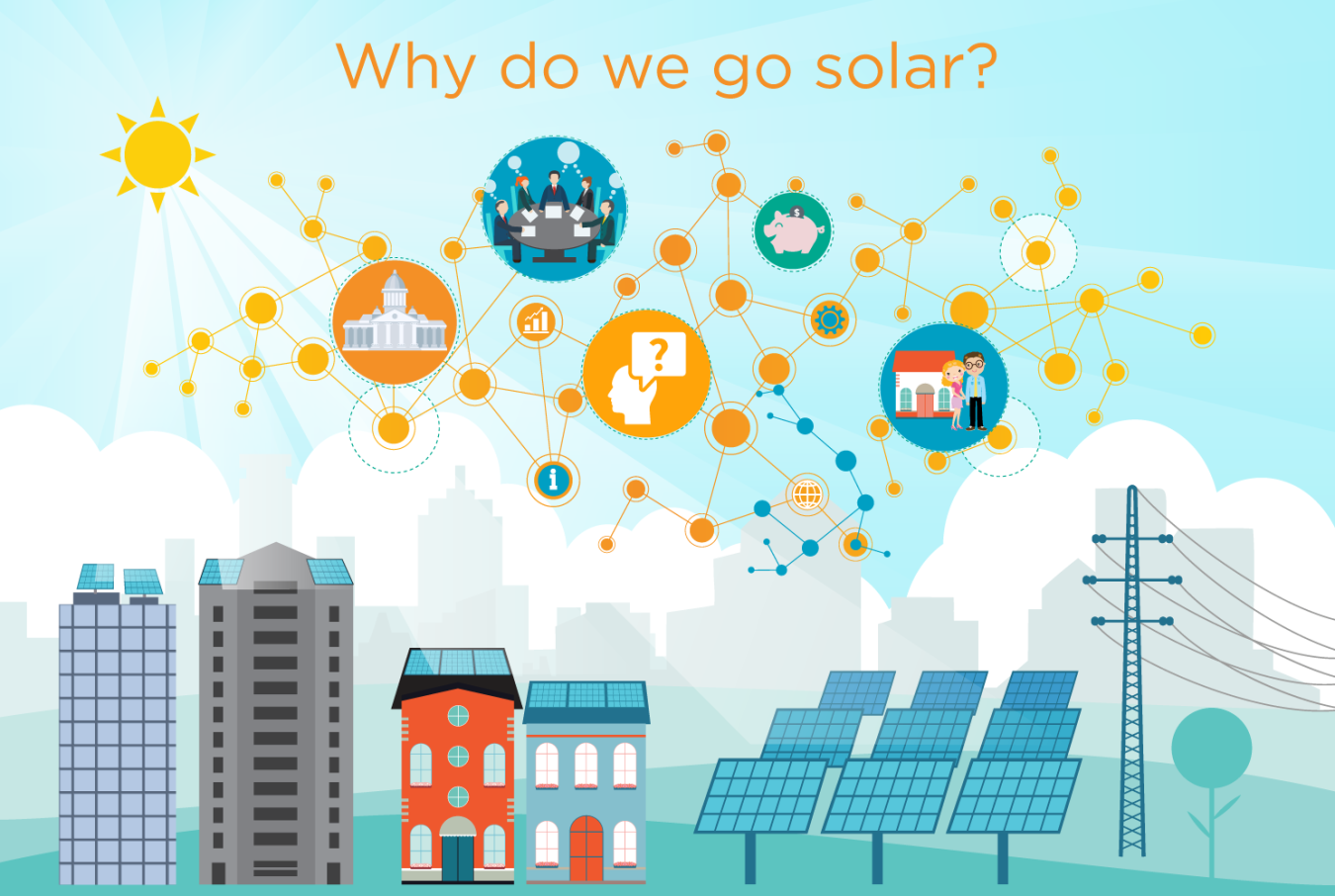The U.S. Department of Energy today announced $21 million in new funding to lower solar energy deployment barriers and expand access to solar energy to all Americans.
Office of Critical Minerals and Energy Innovation
February 8, 2016
The U.S. Department of Energy today announced $21 million in new funding to lower solar energy deployment barriers and expand access to solar energy to all Americans. The Department is making $13 million available to help states take advantage of falling solar prices and maximize the benefits of solar electricity through energy and economic strategic planning. This new program will offer technical and analytical support in the development and implementation of solar energy deployment plans. An additional $8 million under this funding opportunity will support research on solar energy innovation and technology adoption patterns in order to increase understanding of solar deployment barriers and other "soft costs."
As more communities across the country look to solar energy as a source of clean, renewable electricity to meet their economic goals, the funding announced today will help lower barriers to solar energy deployment for states and regions across United States. It will also increase understanding of how and why solar innovations are adopted throughout communities to enable expedited development moving forward.
"As the cost of solar technology continues to fall, it's more important than ever that we lower the other barriers to solar deployment—soft costs," said David Danielson, Assistant Secretary for Energy Efficiency and Renewable Energy at the U.S. Department of Energy. "The funding announced today will provide technical and analytical assistance to states in setting and meeting their renewable energy goals. This initiative will leverage decision science and solar datasets to build our understanding of how and why solar technologies are adopted to make it faster, easier, and more affordable for families and businesses to choose solar to power their daily lives."
Maximizing State Solar Benefits Though Strategic Energy Planning Assistance
$13 million from the funding opportunity announced today will directly tackle solar soft costs and market barrier challenges at the state and regional levels by maximizing the benefits of solar electricity through energy and economic strategic planning. In 2015, solar was the second-most installed source of new electric generating capacity—but this remarkable growth has been limited to a handful of states. Many states do not have the knowledge, time, or staff resources needed to develop a robust solar deployment strategy. They might not know where to begin with "going solar," but require technical and analytical support. This program will help to establish partnerships between states and utilities and provide them with technical support, enabling teams to develop strategies to determine optimal solar energy targets that will maximize emissions reductions, create jobs, expand energy access, and increase grid resiliency.
Building Understanding of Solar Technology Diffusion
The funding opportunity announced today will also aim to increase understanding of the technology evolution, soft costs, and barriers to solar deployment in the United States. By combining cutting-edge research tools with the creation, analysis, and use of data and information, this second round of the Solar Energy Evolution and Diffusion Studies (SEEDS) program will partner researchers with data and energy experts. Through this collaboration, they will examine how solar technologies, the electric grid system, and the institutions that comprise the solar business marketplace support or inhibit the evolution and adoption of solar energy. For this second round of SEEDS, the projects will specifically examine barriers to solar energy deployment within low- and moderate-income communities. The goal of these projects is to increase foundational understanding of solar technology evolution, soft costs, and barriers to solar deployment, while advancing social and decision science methods though the use of the unprecedented data available within the solar sector.
The United States has installed more than 24 gigawatts of solar power—enough to power five million average American homes—and deployment is expected to accelerate as costs continue to fall and more residential, commercial, and utility-scale projects come online. These investments support the broader goals of the SunShot Initiative to drive down the cost of solar power so that it is accessible and affordable for all Americans.

